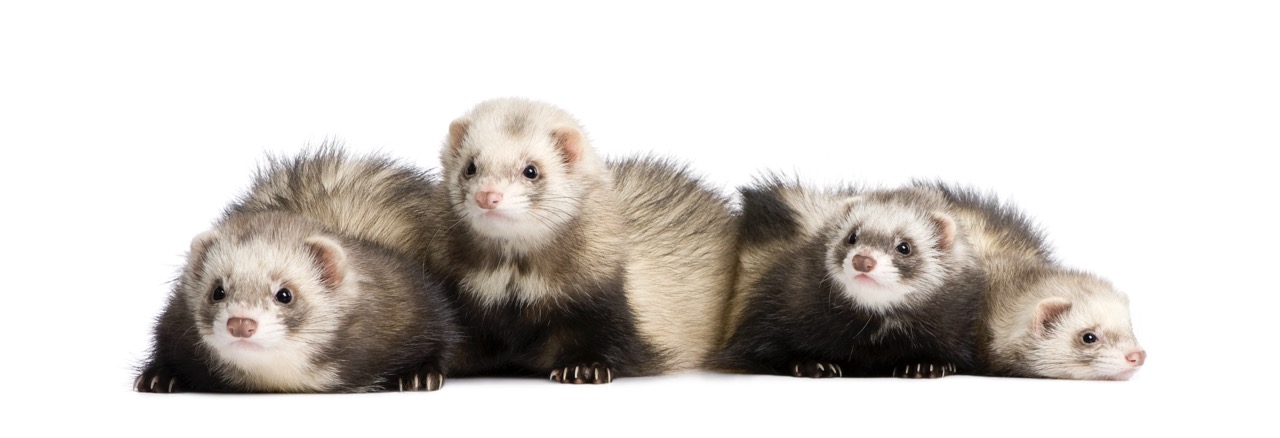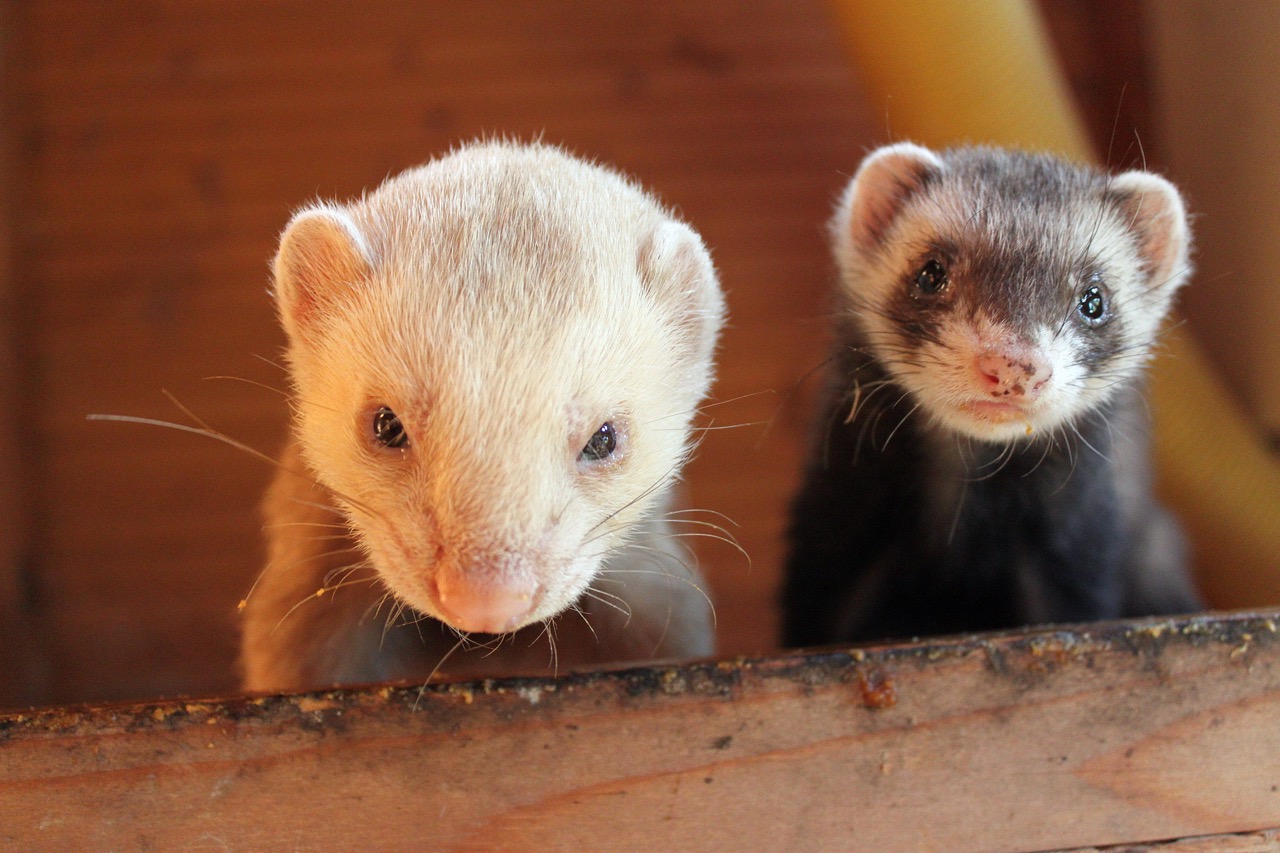Ferrets are fascinating creatures known for their playful, inquisitive nature and complex social behaviors. As domesticated animals, they have adapted to living with humans and other pets, forming a unique social structure. Understanding the biology of ferret socialization can provide insights into their behavior, communication styles, and the importance of social interactions throughout their lives. This article explores the social dynamics of ferrets, how they communicate, the stages of their social development, and the critical role that play has in their interactions.
Understanding Ferret Social Structure and Behavior Patterns
Ferrets (Mustela putorius furo) are inherently social animals, often living in groups in the wild. In a domestic setting, their social structure can vary based on their environment and the presence of humans and other animals. Ferrets tend to establish a hierarchy within their group, which is often dictated by age, size, and personality. The more dominant individuals may control access to resources such as food and sleeping areas, while subordinate ferrets learn to navigate these dynamics through social cues and interactions.
Behavior patterns among ferrets are highly influenced by their social environment. They exhibit a range of behaviors, including grooming, play fighting, and scent marking, which serve to strengthen bonds within their social group. Ferrets also engage in various forms of exploration and curiosity-driven behaviors, which are essential for their mental stimulation and development. Understanding these interactions can aid owners in creating an enriching environment that caters to the natural instincts and social needs of their ferrets.
In addition to their social structure, ferrets have specific behavioral traits that characterize their interactions. For instance, they are known for their playful disposition and can often be observed engaging in mock-fighting and chasing games with each other. These behaviors not only enhance social bonding but also serve as practice for real-life skills needed for survival in the wild. Recognizing these behavior patterns can help owners foster healthy socialization among their ferrets, ensuring they thrive emotionally and physically.
Communication Methods: Vocalizations and Body Language
Ferrets communicate through a variety of vocalizations and body language, which play a crucial role in their social interactions. Common vocalizations include chirps, chatter, and grunts, each indicating different emotions or intentions. For instance, a high-pitched "dooking" sound often signifies excitement or playfulness, while softer vocalizations may indicate contentment or discomfort. Understanding these vocal cues helps owners interpret their ferrets’ feelings and respond appropriately to their needs.
Body language is equally important in ferret communication. They use a range of postures and movements to convey emotions and intent. For example, when a ferret arches its back and puffs up its fur, it may be feeling threatened or agitated. Conversely, a relaxed ferret will have a loose body posture and may roll onto its back, signaling trust and comfort. Observing these subtle cues is essential for interpreting social dynamics within a group of ferrets, as they rely heavily on non-verbal communication to interact.
Moreover, social interactions among ferrets can also reflect their emotional states through their body language. Playful ferrets often exhibit quick, darting movements and can engage in playful wrestling, while more subdued ferrets may prefer to observe from a distance. Recognizing these differences in behavior allows owners to facilitate harmonious interactions among ferrets, promoting a supportive social environment that caters to each individual’s personality and comfort level.
Socialization Stages: From Kittenhood to Adulthood
Ferret socialization begins in kittenhood, a critical period for establishing social skills and behaviors. During this stage, young ferrets learn essential life skills through interactions with their littermates and their mother. They engage in play, which is vital for developing hunting instincts and social cues. This playful exploration helps them understand boundaries, bite inhibition, and appropriate social behaviors that are crucial for their future interactions.
As ferrets mature into adolescence, their social needs and behaviors begin to shift. They may exhibit more dominant or assertive behaviors as they compete for resources and establish their place in the social hierarchy. During this time, proper socialization remains essential. Ferret owners should ensure their pets have plenty of opportunities for interaction with both their peers and humans to prevent behavioral issues, such as aggression or excessive shyness, from developing.
Adulthood marks a phase where ferrets often settle into their social roles within a group. While they may become less playful than in their younger years, their social bonds remain strong. Adult ferrets continue to communicate and interact through established behaviors, and their socialization experiences during kittenhood and adolescence greatly influence their adult interactions. Understanding these stages allows owners to provide tailored environments that meet the evolving social needs of their ferrets throughout their lives.
The Role of Play in Ferret Social Interaction Dynamics
Play is a fundamental aspect of ferret socialization and interaction dynamics. It serves not only as a form of physical exercise but also as a critical mechanism for learning social skills and fostering relationships. Through play, ferrets practice their hunting instincts and refine their physical coordination, all while engaging with one another. This playful behavior encourages bonding and creates a positive social atmosphere within their group.
In addition to strengthening social ties, play can also serve as a conflict resolution tool among ferrets. Engaging in playful activities allows ferrets to establish boundaries and learn acceptable behaviors in a non-threatening context. When conflicts arise, playful interactions can help to diffuse tension and reaffirm social bonds. Recognizing the importance of play in their interactions can lead to healthier and more balanced social dynamics among ferrets.
Owners can facilitate play by providing various toys and opportunities for independent and interactive play. Creating a stimulating environment that encourages exploration and play can positively impact ferrets’ social behaviors. By understanding play’s role in socialization, owners can enrich their ferrets’ lives and promote healthy interactions that enhance their overall well-being.
In conclusion, ferrets are complex social animals with rich communication methods and behavior patterns that define their interactions. Understanding their social structure, the nuances of their vocalizations and body language, the stages of their social development, and the role of play can greatly enhance the experience of owning ferrets. By creating a supportive and enriching environment, ferret owners can nurture their pets’ social needs, leading to happier, healthier, and more well-adjusted companions.










